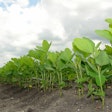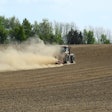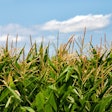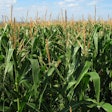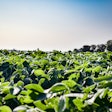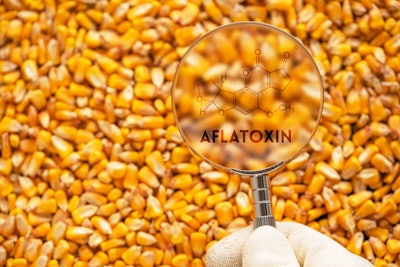
DSM-Firmenich, Selko and Alltech have published the results of their 2024 mycotoxin analyses, finding high levels of mycotoxins in many samples, causing challenges for animal feed and grain producers.
DSM-Firmenich: All main mycotoxins increased
DSM-Firmenich collected and analyzed more than 28,000 samples from 95 countries. Compared with 2023, results concluded that all six main mycotoxins increased, including aflatoxin (AFLA), zearalenone (ZEA), vomitoxin, fumonisins (FUM), T-2 mycotoxin and ochratoxin A (OCHRA).
Risk increased in Central Europe, as well as in the Middle East and North Africa compared with 2023. Risk remains extreme with the highest regions of mycotoxins found in North and Central America, South Asia, China and Taiwan.
The mycotoxin risks that threaten feed quality and animal performance globally vary across regions worldwide, with multiple kinds of mycotoxins often occurring together.
Additionally, a range of key byproducts and alternative feed components were tested, analyzing metabolites found and their prevalence with numerous mycotoxins discovered.
“The persistent presence of mycotoxins continues to pose a threat to animal welfare, productivity, and sustainability in agriculture,” said Ursula Hofstetter, head of mycotoxin risk management at DSM-Firmenich Animal Nutrition & Health. “These results once again underscore the critical need for effective mycotoxin management strategies. Implementing such strategies is crucial for maintaining the profitability of both the feed industry and animal protein sectors as well as ensuring feed and food safety.”
Selko: Zearalenone the most-detected mycotoxin
Selko’s 2024 Global Mycotoxin Review analyzed more than 86,000 samples from 47 countries. These samples included grains, byproducts, protein meals, silages and total mixed rations. Selko’s report also focused on the six main mycotoxins.
Globally, ZEA was the mycotoxin most detected in 2024 samples, with 66% of samples showing a detectable level. Additionally, DON (58%), FUM (54%) and T-2/HT-2 toxin (T2HT2) (56%) were found in more than half the samples tested. DON and FUM had the highest average concentrations as well as the highest median concentrations.
Mycotoxin contamination was higher in grain byproducts than their parent grains. In protein meals, soybean meal saw the highest levels of contamination from ZEA and T2HT2.
Regionally, AFLA (50%) and ZEA (46%) were the major contaminants in the Middle East and Africa samples while in Asia more than 50% of the samples were contaminated with AFLA, OCHRA, FUM and ZEA. Contrary to Asia, T2HT2 and DON were detected in more than 40% of European samples along with ZEA and FUM. In Latin America, more than 40% of all the samples tested contained five of the “Big 6” mycotoxins, excluding T2HT2. In North America, except for AFLA, all other mycotoxins were detected in more than 90% of samples tested.
“Feed mills today, more often than before, are depending not only on their own country raw materials, but on those imported from other countries, such as USA, where the mycotoxin challenge is different from the country of feed production” said Dr. Swamy Haladi, technical commercial manager for Selko’s Mycotoxin Risk Management Program.
Alltech: Moderate to high overall risk for mycotoxin contamination
Alltech’s 2024 U.S. Harvest Analysis report revealed significant challenges for U.S. crop producers due to early season rains and late-season droughts. The report indicates a moderate to high overall risk for mycotoxin contamination.
Dr. Max Hawkins, global technical support for Alltech’s Technology Group, noted an increased risk for corn grain and corn silage across all U.S. regions compared to 2023.
“This results in increased pressure on animal health and performance, necessitating a proactive mycotoxin management program,” he said.
The Alltech 2024 U.S. Harvest Analysis program tested new-crop grains and forages from farms and feed production sites nationwide.
In corn silage, the Upper Midwest shows higher risk due to DON compared to 2023, with emerging mycotoxins and Type B trichothecenes most prevalent. Risk from corn grain is primarily DON and fumonisins, with the Midwest facing greater risk than 2023, especially for monogastrics.








